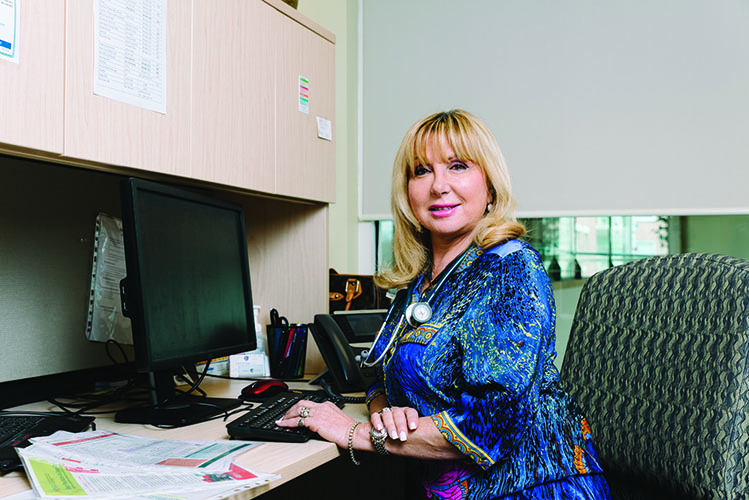
When NP Clara Nisan became director of clinical services at Mackenzie Health long-term care (LTC) home in Richmond Hill in 2015, she made use of an interprofessional team and instituted changes that reduced emergency department transfers by 45 per cent. In the three years since, that trend has continued, with annual reductions averaging 31 per cent.
The transformation of this 168-bed home is just one of the remarkable improvements worth celebrating in LTC across Ontario. In fact, there are plenty of good-news stories in homes large and small, from the bustling GTA to a converted house in the north that serves a geographic area the size of Germany. Media tend to focus on what’s going wrong in LTC, but to map a path towards improvement, we bring you three examples of what’s going right in this challenging but inspiring sector.
These facilities and locations vary, but share common challenges and encouraging results thanks in no small part to the leadership of NPs and RNs.
Nisan’s path to Mackenzie Health began in 1979. She worked in the community and an ICU/CCU in Israel before coming to Canada, where she would work 24 years at Baycrest Health Sciences. In 2014, Nisan earned her designation as an NP-PHC (primary health care) from Ryerson University. While her path to becoming an NP was long, the destination was never in doubt: she wanted to advocate for geriatric patients.
“This is my passion,” she says.
She realized that passion thanks to a confluence of good things.
Mackenzie Health’s LTC home is managed by UniversalCare Canada Inc., which funds two directors of care, tasking one with administration so Nisan can focus her considerable energy and expertise entirely on caring for residents. “I don’t have to discipline anyone or hire or fire people,”
she says.
Her experience is not the norm.
Most LTC homes have a single director of care who is responsible for everything, and is helped by an assistant director of care (an RN) because that is how they are funded by the ministry of health. But the support and unique structure at UniversalCare has provided Nisan with various opportunities to build capacity and to leverage partnerships with RNAO.
RNAO’s help has been invaluable, she says, from best practice guidelines (BPG) to the facility’s partnership with LTC BPG co-ordinator Sue Bailey, who visits several times a year to teach staff how to integrate BPGs. Bailey is one of 14 RNAO LTC co-ordinators who work within regions across the province to support the success of BPGs.
“RNAO (has provided) excellent access to us since the beginning,” Nisan says of BPGs and Bailey. That help is especially useful at a facility that goes above the norm in many ways. In fact, this LTC home:
- shares a building with the hospital run by Mackenzie Health, so the home has as many as 30 hemodialysis residents who can access dialysis treatment available one floor below
- cares for 18 residents who depend upon gastrostomy tubes to be fed
- provides palliative care so residents who require it don’t have to be transferred to hospital
- works with a pharmacist so its interprofessional team is able to control 94 per cent of residents’ pain
- funds all registered staff to attend two full days of education provided by external clinical specialists, including RNAO leaders
RNJ ACCESS
You are only one quick step away from full access to all RNJ content.
Already an RNAO member? Log in
